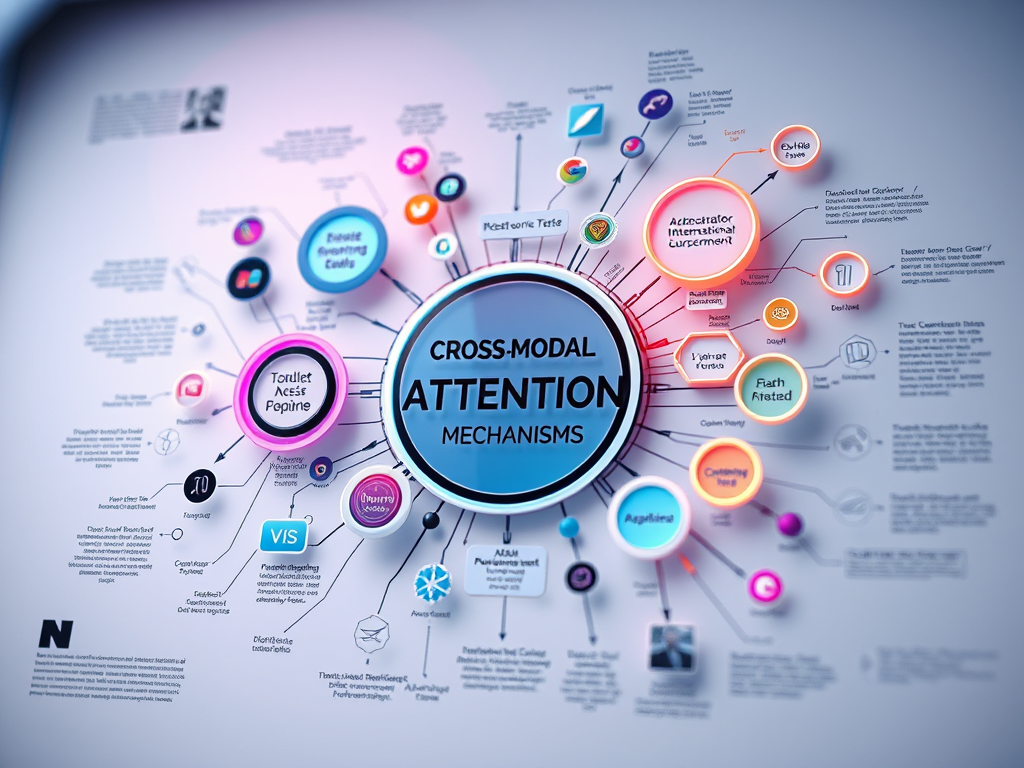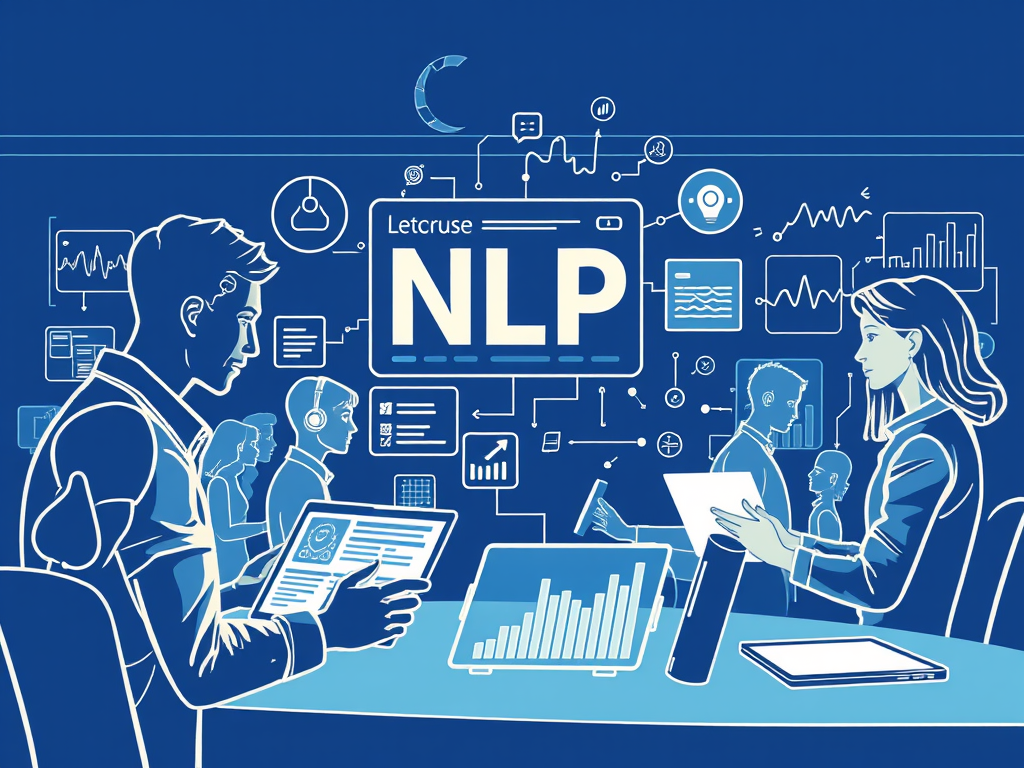The fascinating world of Multi-Modal Natural Language Processing (NLP) represents a groundbreaking advancement in artificial intelligence. By seamlessly integrating vision and language understanding, modern AI systems can now process and interpret both textual and visual information simultaneously. This revolutionary approach to multi-modal NLP has transformed how machines perceive and interact with the world around them. Through sophisticated vision-language architectures and cross-modal attention mechanisms, AI systems can now bridge the gap between visual perception and linguistic comprehension in ways previously thought impossible.
The Foundation: Vision-Language Architectures
The backbone of multi-modal NLP lies in its innovative vision-language architectures. These frameworks enable AI systems to process images and text concurrently, creating a unified understanding of both modalities. Modern architectures like CLIP, ViLBERT, and DALL-E have demonstrated remarkable capabilities in comprehending the intricate relationships between visual and textual content.
These architectures implement sophisticated neural networks that process visual and textual inputs through parallel pathways. The visual pathway typically employs convolutional neural networks (CNNs) or vision transformers to extract hierarchical features from images. Meanwhile, the language pathway utilizes transformer-based models to process textual information, breaking down sentences into meaningful semantic units.
The magic happens at the intersection of these pathways, where specialized fusion mechanisms combine visual and textual features. This fusion occurs at multiple levels, allowing the system to capture both fine-grained details and high-level semantic relationships. For example, when analyzing a photograph with accompanying text, the architecture can identify specific objects, their spatial relationships, and how they correspond to textual descriptions.
Recent advancements have introduced more efficient architectures that reduce computational overhead while maintaining high performance. These improvements make multi-modal systems more practical for real-world applications, enabling faster processing and better resource utilization.
Cross-Modal Attention Mechanisms

Cross-modal attention mechanisms function as sophisticated neural bridges between visual and linguistic information. These mechanisms enable AI systems to selectively focus on relevant portions of both modalities, creating meaningful connections between them. The process mirrors human cognitive behavior, where we naturally link what we see with what we read or hear.
The attention mechanism works by computing relevance scores between elements of different modalities. When processing an image with associated text, the system calculates attention weights that determine how much each image region should influence the understanding of each word, and vice versa. This bidirectional flow of information ensures comprehensive understanding of the relationship between visual and textual elements.
Advanced implementations now incorporate multi-head attention, allowing the system to capture different types of relationships simultaneously. For instance, one attention head might focus on object identification, while another concentrates on spatial relationships, and a third captures emotional or abstract connections.
Furthermore, these mechanisms adapt dynamically to different input combinations, making them robust across various scenarios. This adaptability proves crucial in handling complex real-world situations where the relationship between text and images might not be immediately obvious.
Joint Embedding Spaces: Unifying Vision and Language
Joint embedding spaces represent a fundamental breakthrough in multi-modal NLP, providing a mathematical framework where both visual and textual information can coexist in a meaningful way. These spaces act as a common ground where different types of information can be compared, contrasted, and combined.
The creation of effective joint embedding spaces requires sophisticated training techniques. During training, the system learns to map both visual and textual features to vectors in a shared high-dimensional space. These mappings preserve semantic relationships, ensuring that similar concepts across modalities are positioned close to each other in the embedding space.
Recent research has focused on improving the quality of these embeddings through contrastive learning approaches. These methods help create more robust and meaningful representations by encouraging the system to distinguish between related and unrelated pairs of visual and textual content.
The effectiveness of joint embedding spaces extends beyond simple matching tasks. They enable complex operations like visual question answering, where the system must combine information from both modalities to generate appropriate responses. They also support creative applications, such as text-to-image generation and image manipulation through natural language instructions.
Real-World Applications

The practical impact of multi-modal NLP continues to expand across various industries, revolutionizing how we interact with technology and process information.
E-commerce and Visual Search
Multi-modal systems have transformed online shopping experiences by enabling sophisticated visual search capabilities. Shoppers can now find products by combining image uploads with textual descriptions. The technology understands nuanced queries like “show me dresses similar to this one but with longer sleeves” while analyzing product images. These systems also power virtual try-on experiences and automated product tagging, significantly improving inventory management and customer satisfaction.
Healthcare and Medical Imaging
In healthcare, multi-modal NLP systems assist medical professionals by analyzing medical images alongside patient records and clinical notes. These systems can identify potential diagnoses by correlating visual patterns in medical imaging with documented symptoms and patient histories. They also help in automating medical report generation, ensuring consistency between visual findings and written documentation.
Autonomous Vehicles
Self-driving vehicle systems rely heavily on multi-modal processing to navigate complex environments safely. These systems must interpret visual information from multiple cameras while understanding natural language instructions from passengers. They also process various data streams, including traffic signs, road conditions, and verbal commands, making split-second decisions based on this integrated information.
Content Creation and Management
Content creators and managers benefit from AI-powered tools that understand both visual and textual elements. These systems assist in generating appropriate captions for images, organizing multimedia libraries, and creating coherent content that maintains consistency across different formats. They also enable advanced content search capabilities, allowing users to find specific media assets using natural language descriptions.
Impact on Future Technologies
The evolution of multi-modal NLP continues to shape the future of artificial intelligence, pushing boundaries and opening new possibilities. Current research focuses on developing more sophisticated models that can handle increasingly complex tasks while maintaining efficiency and reliability.
Emerging trends include the development of more context-aware systems that can understand subtle nuances in both visual and textual information. These advancements will enable more natural human-machine interactions and more accurate content understanding.
The field is also moving toward more efficient architectures that can process multiple modalities in real-time while consuming less computational resources. This efficiency will be crucial for deploying multi-modal systems in resource-constrained environments like mobile devices and edge computing platforms.
FAQs:
- What makes multi-modal NLP different from traditional NLP?
Multi-modal NLP processes both visual and textual information simultaneously, while traditional NLP focuses solely on text processing. This integrated approach enables more comprehensive understanding and analysis of complex scenarios that involve multiple types of information. - How do vision-language architectures work?
These architectures use parallel neural networks to process visual and textual inputs, creating unified representations through cross-modal attention mechanisms. They employ specialized components for each modality before combining them through sophisticated fusion techniques. - What are the main challenges in multi-modal NLP?
Key challenges include aligning different modalities effectively, handling ambiguous relationships, maintaining computational efficiency, and ensuring consistent performance across diverse use cases. Researchers also face challenges in creating balanced datasets for training these systems. - Can multi-modal NLP systems understand context better than single-modal systems?
Yes, multi-modal systems often demonstrate superior contextual understanding by leveraging information from multiple sources. This comprehensive approach allows them to capture nuances that might be missed when analyzing text or images alone. - What industries benefit most from multi-modal NLP?
E-commerce, healthcare, autonomous vehicles, and content creation industries currently see the most significant benefits. These sectors leverage multi-modal systems for tasks ranging from visual search to medical diagnosis and autonomous navigation. - How does cross-modal attention improve AI performance?
Cross-modal attention helps AI systems focus on relevant information across different modalities, leading to more accurate and contextually appropriate responses. This mechanism enables systems to understand complex relationships between visual and textual elements. - What future developments can we expect in multi-modal NLP? Future developments will likely include more sophisticated reasoning capabilities, improved real-time processing, and enhanced contextual understanding across domains. We can also expect advances in efficiency and scalability, making these systems more accessible for various applications.
Stay updated with our latest articles on fxis.ai

